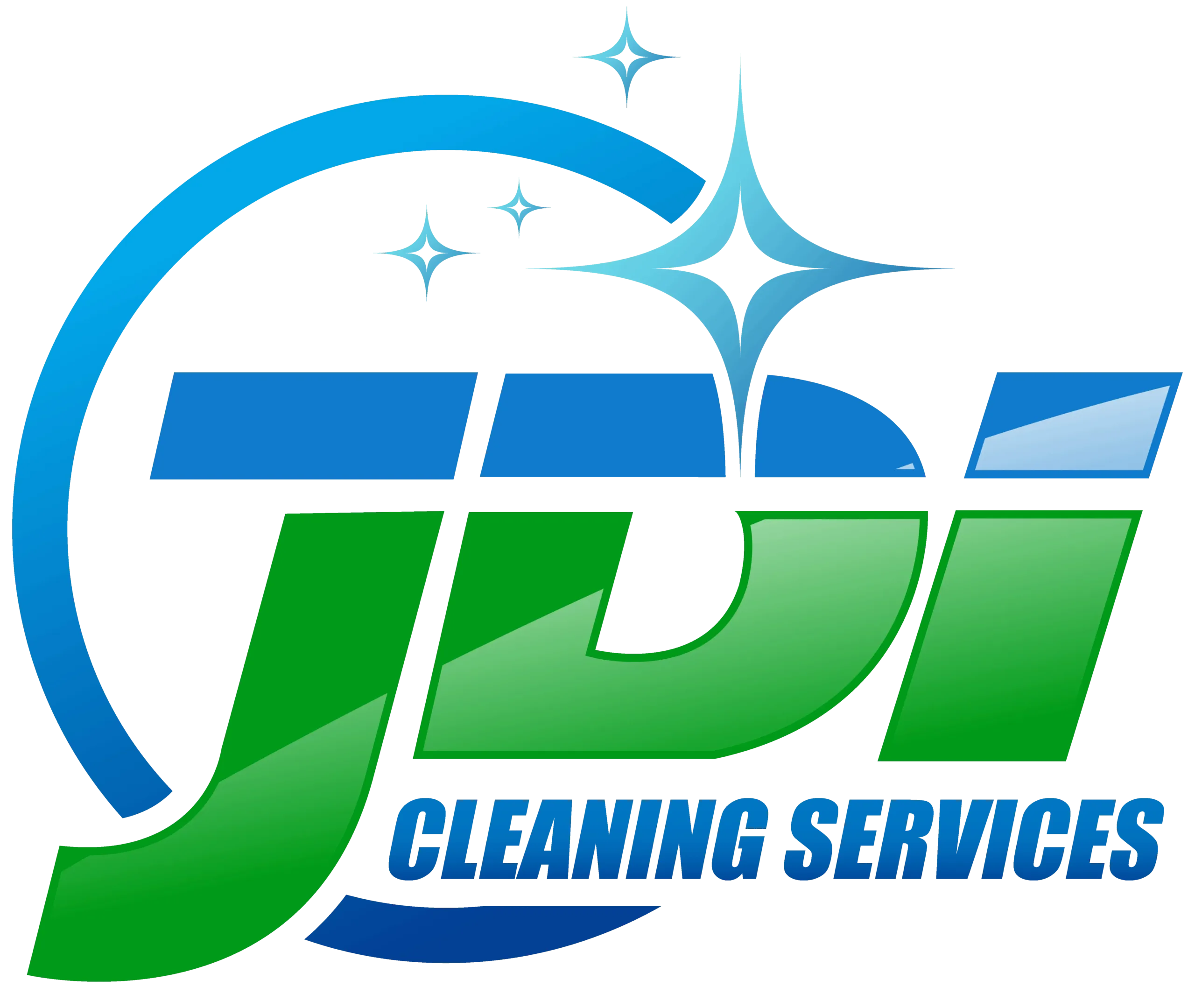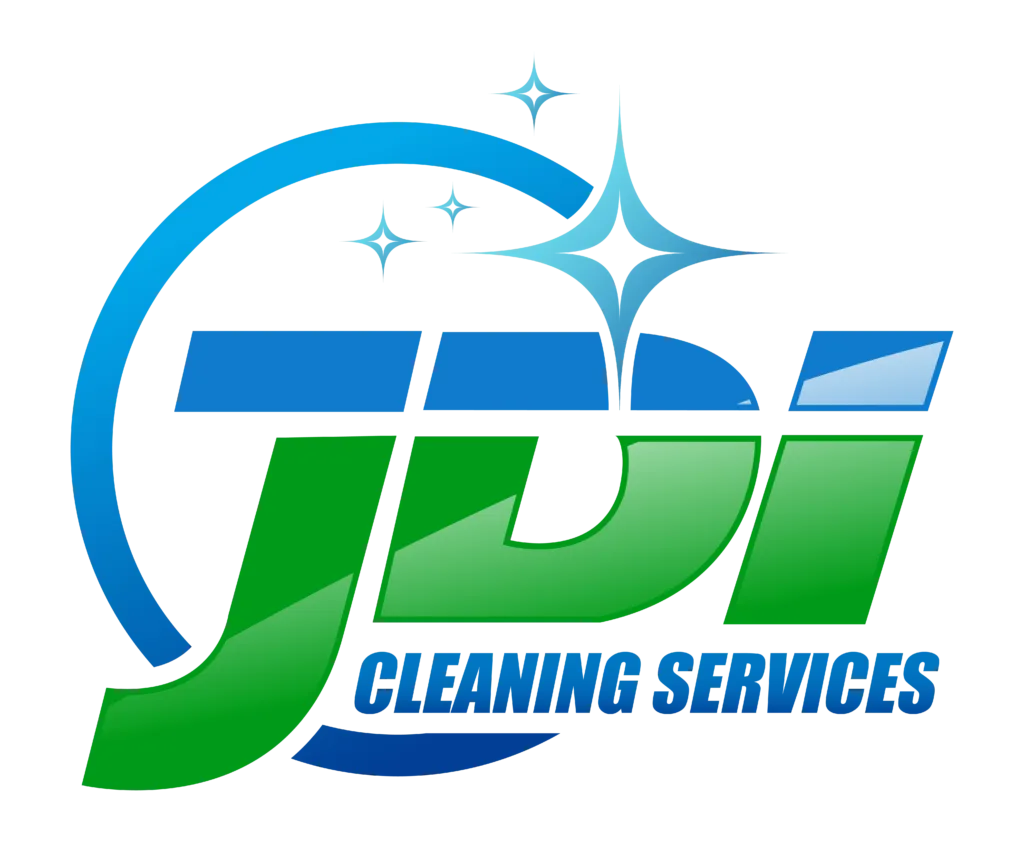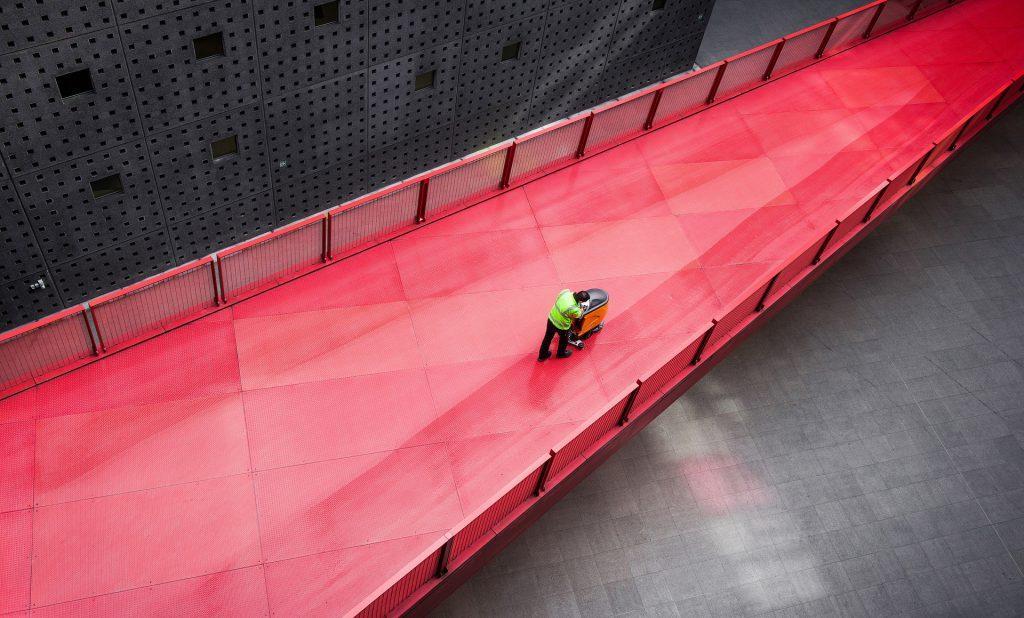Janitorial Vs Commercial Cleaning
While cleaning is a simple process to define, there are significant differences between ‘janitorial’ and ‘commercial’ cleaning services.
Janitorial
Janitorial cleaning refers to routine, everyday maintenance seen in an office or building. This process follows the usual 7-step cleaning process applied to bathrooms and other such common areas. The small, routine duties of a janitorial cleaner are the following;
- Restroom cleaning
- Mopping and sweeping
- Vacuuming
- Disinfection and sanitization of touch-point surfaces
- Changing garbage bags
Commercial Cleaning
The difference between commercial cleaning is the scale and frequency of the cleaning. Commercial cleaning tends to include larger, infrequent projects that require heavier equipment. An example would be the detailed-cleaning of a factory or industrial space a few times per year. The duties included are;
- Cleaning grout
- Powerwashing
- Carpet cleaning
- Waxing
- Furniture
Commercial cleaning leads to the same conclusion; however, it is just a more significant job typically performed less often.
The 7-Step Cleaning Process
Regardless if it’s commercial or janitorial cleaning, both follow the same protocol. This protocol is known as the ‘7-step cleaning process’, which serves as a helpful guide for workers. The 7-step cleaning process ensures that surfaces are cleaned, sanitized, and disinfected so that surfaces do not accidentally become dirty.
Any misstep could lead to additional bacterial growth, which is the health-hazard intended to be removed in the first place. The 7-step process follows this order;
- Remove trash
- Dust in high places
- Damp wipe
- Stock and replace products
- Dust mop / or sweeping
- Walk-around and inspection
- Wet mop the floor and place the wet floor sign
To summarize, the 7-step process is about cleaning from top-to-bottom to ensure no additional dirt or grime falls onto already cleaned spaces. Proper cleaning techniques, disinfection, and sanitization methods are not mentioned but are assumed to take place.
Cleaning, Disinfection, and Sanitization
Often confused with one another, there are significant differences between cleaning, sanitization, and disinfection. In fact, maintaining proper safety measures means that this descending order must be followed to meet the health standards. Part of standard janitorial and commercial cleaning services is to disinfect touchpoints with these standards in mind.
Cleaning
Cleaning is the process that removes dirt and grime through washing and scrubbing. It creates the visual appearance that a surface is ‘clean.’ However, wiping dirt off surfaces does not mean viruses, bacteria, and other pollutants have been dealt with.
Disinfection
Kills and inactivates viruses and bacteria. Disinfectants are the heavy-hitting chemicals that will completely sterilize a surface and ensure it is clean and safe.
Sanitization
Often confused with disinfection, sanitization reduces bacteria but does not completely kill them. Additionally, sanitizers may not kill certain viruses and other microbes, meaning the surface can still be dangerous.
The 4 Categories of Cleaning Agents
There are different challenges and requirements for tackling cleaning challenges. Likewise, specific chemicals have been created for these purposes; from greasy dishes to liquid spills, and burnt-on oven interiors. Cleaning products come in four different categories, each based on the purpose of the product.
Detergents
Detergent cleaning chemicals are used for laundry and specialize in breaking down and removing soil particulates. As a result, detergents are a petroleum base mixed with synthetic chemicals. That said, these commonly available chemicals are incredibly toxic, corrosive (high pH), and irritating to the body.
Degreasers
Degreasers are typically solvent-based, made from alcohol. They are consequently used to dissolve grease and oil from surfaces, as their namesake suggests. Other applications include removing stains, scuff marks, and ink on surfaces by lifting or dissolving them.
Abrasives
Abrasive cleaning products come in the form of liquids, powders, and scouring pads. They are known for removing built-on grime and soil from surfaces through the use of mechanical force. While the chemical is manually scrubbed, it begins to foam up, which shows that the reaction is working. Inside the powder are tiny particles that help remove the dirt and lift them away.
Typical ingredients found in abrasives are calcium carbonate, pumice, and volcanic ash.
Acids
Acidic cleaning products have a high pH and are the most powerful, corrosive, and volatile of all cleaning products. Acidic cleaners’ purpose is to remove tough mineral deposits, scaling, and large clumps of protein by dissolving them into nothing. Examples include drain cleaners, which create intense chemical reactions when in contact with organic and non-organic matter.
It’s for this reason that acidic cleaners should be used with caution.
Green Cleaning

Green cleaning products tend to be non-toxic, and have no irritating fumes
Commercially available cleaning products, specifically strong ones, have been heavily criticized for their effects on the environment. Industrial cleaners and high ph chemicals like bleach are incredibly volatile, toxic, and corrosive to organic material. This makes them excellent for removing blockages and stripping surfaces. However, it is deadly to humans and wildlife.
While many toxins are filtered through water treatment plants, some deadly compounds can pass through as a by-product of use. Eventually, these toxic chemicals can find their way into ecosystems through watersheds. Inevitably this kills fish and other wildlife.
Alternatively, many workers claim to develop conditions due to the constant irritation caused by some of these chemical exposures. For these reasons, ‘green cleaning‘ has become popular by way of DIY cleaning alternatives and through the manufacturing of eco-friendly cleaners.
Eco-friendly commercial products will be labelled as such with either a green seal or eco-logo insignia.
DIY Cleaning Chemicals and Their Effectiveness
Regular brand-name cleaning chemicals do their jobs effectively. However, there has been some controversy surrounding the ill-effects they may cause.
Particularly strong cleaning chemicals are known for causing environmental damage and killing wildlife, as well as being extremely toxic and irritating to humans. Some are known to break down into VOCs, or volatile organic compounds.
VOCs are produced by certain liquids or solids and can cause irritation and other ill health effects after exposure. Specific symptoms include,
- breathing problems
- Irritation of eyes, lungs, and throat
- Headaches
- Cancer, if exposed long enough
VOCs are a by-product of everyday cleaning products, air fresheners, and paints.
For this reason, some people desire to use natural or DIY cleaning chemicals as an alternative. The following are five common ingredients used in DIY cleaning and what their function is.
Dishwashing Liquid
Dishwashing liquid is a gentle, highly recommended alternative to some of the more aggressive cleaning products. When some cleaning recipes ask for ‘warm soapy water’ as a solution, it is dishwashing soap that they refer to due to it being pH neutral.
Additionally, it is a great sanitizer, as it reduces and removes bacteria and viruses from surfaces.
Baking Soda
Commercial cleaning chemicals labelled as abrasives work by activating a secondary ingredient, as mentioned previously. These secondary ingredients will foam up as a response to friction, using tiny raspy particles to rip away grime. Baking soda is a powder that acts as a natural abrasive powder in the same way. This is why it is often partnered with other natural ingredients so often.
Hydrogen Peroxide
Hydrogen peroxide is the natural equivalent to bleach. However, it is safer since it can break down quickly. The result is its everyday use for disinfecting surfaces, which is integral to proper and safe cleaning.
Rubbing Alcohol 70 % or Above
70% Isopropyl alcohol is another powerful disinfectant used for cleaning and disinfecting surfaces. This product is powerful enough to kill microbes like the coronavirus. The mixture of purified water and alcohol allows the substance to enter into and denature proteins, which causes cell death. For this reason, it is the most widely used disinfectant.
Dangerous Cleaning Chemicals and Their Reactions
Brand-name cleaning chemicals with high pH are dangerous, whether it is a high or low extreme. Both numbers represent a highly corrosive substance and are extremely volatile if it comes into contact with another chemical. Of these reactions, mixing an acid and a base is the most violent.
Reactions between an acid and a base cause explosive, exothermic reactions; the result can scatter corrosive droplets everywhere. Some of these reactions can create toxic gases as well, like mustard gas. Inhaling these fumes can cause pain, tissue damage, and death from long-term exposure.
In particular, you should never mix the following common chemicals;
- Bleach + ammonia = Mustard gas
- Bleach + vinegar = Chlorine gas
- Bleach + rubbing alcohol = Chloroform
- Hydrogen peroxide + bleach = Peracetic acid
- Two different drain cleaners = Explosion
Cleaning a Chemical Spill
Sometimes a chemical spill may occur resulting from an accident or reaction like those above. It is essential to know how to deal with these situations, as the danger level may prevent damage controls.
The best way to figure out whether or not a chemical cleanup is safe or not is to examine the WHIMS information provided on the product container. The WHIMS symbols can reveal the particular hazards of a product while also giving ample warnings and solutions.
Products that produce flammable fumes should be avoided all-together and dealt with by professionals. However, any chemicals that are not immediately toxic should be controlled through absorption or watering down. For example, a highly corrosive chemical spill can be neutralized by throwing soda ash at it. However, the reaction may initially be volatile. Alternatively, using towels or cat-litter can absorb dangerous liquids, preventing them from causing more damage by stalling them.
Chemicals that produce noxious fumes are deadly if inhaled; however, it only spreads if it can travel. Trapping these fumes in well-ventilated rooms so they cannot circulate is the best course of action.
Works Cited
Canada, Health. “Government of Canada.” Canada.ca, Government of Canada, 22 Aug. 2019, www.canada.ca/en/health-canada/services/air-quality/indoor-air-contaminants/volatile-organic-compounds.html.




